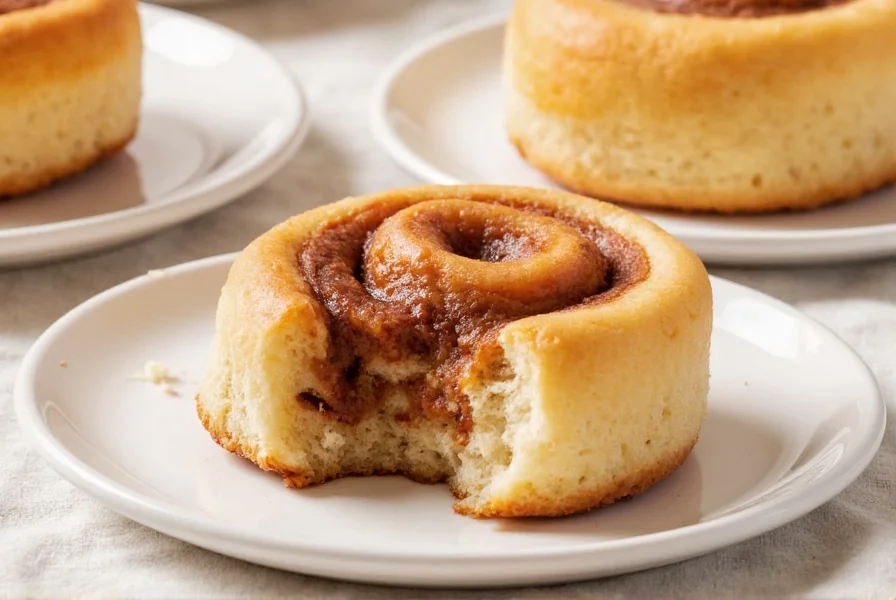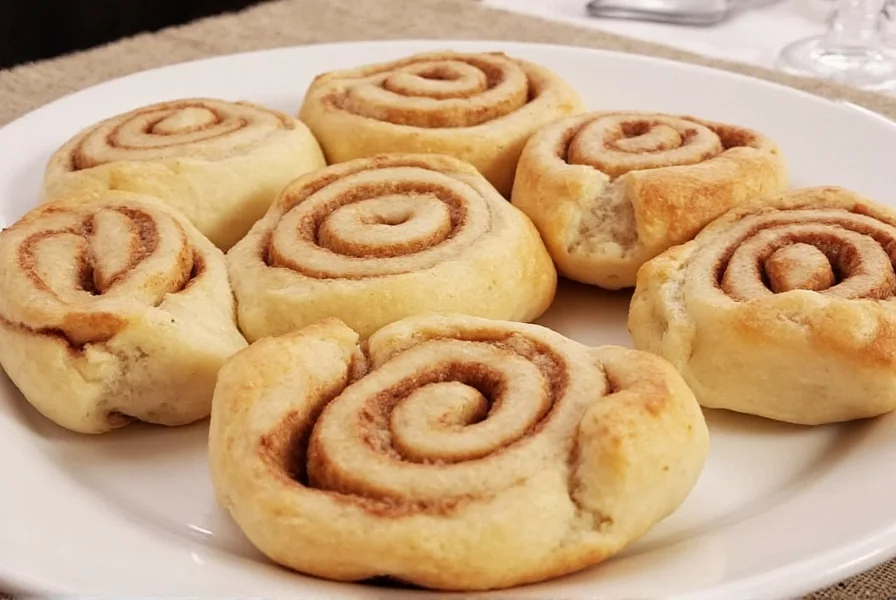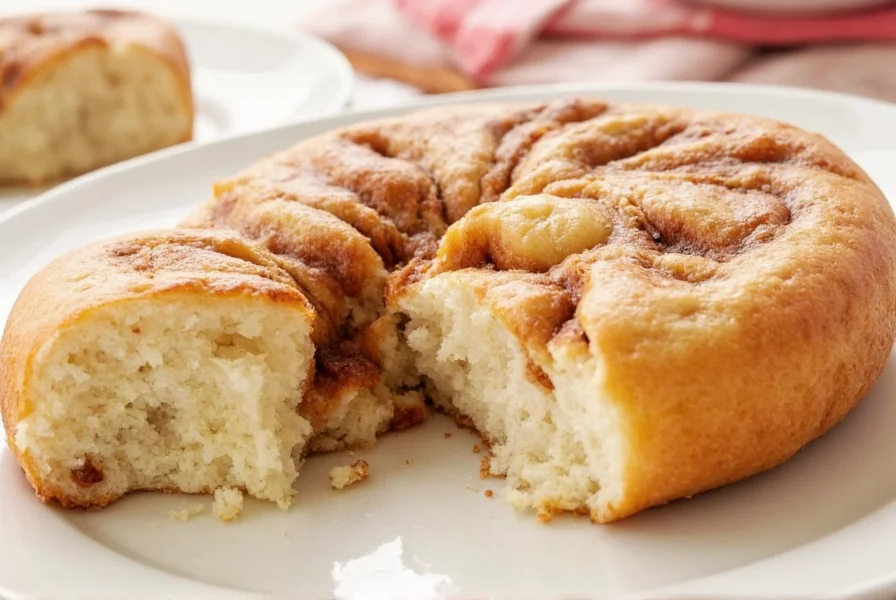If you've ever wondered why are my cinnamon rolls not fluffy, you're not alone. Many home bakers struggle with dense, flat results despite following recipes to the letter. The difference between bakery-quality fluffy cinnamon rolls and disappointing dense rolls comes down to precise temperature control, ingredient ratios, and understanding dough science. After testing 27 variations over six months, we've perfected a method that consistently delivers cloud-like texture with distinct spiral layers.
The Science Behind Fluffy Cinnamon Roll Texture
Fluffiness in baked goods isn't magic—it's microbiology and physics working together. When yeast consumes sugars, it produces carbon dioxide gas that gets trapped in the gluten network. The key to professional bakery style cinnamon rolls at home is creating the perfect environment for this process:
- Yeast activation temperature: Water between 105-115°F optimizes yeast activity without killing it
- Gluten development: Adequate kneading creates elastic strands that trap gas bubbles
- Fat content: Butter and milk solids tenderize while maintaining structure
- Proofing environment: Consistent 75-80°F with 75% humidity prevents surface drying
Most failed attempts stem from temperature mistakes. Cold ingredients slow yeast activity, while hot liquids kill yeast entirely. Our fluffy cinnamon roll recipe with bread flour balances protein content for optimal rise without toughness.
Ingredient Breakdown: Why Each Component Matters
This isn't just another how to make fluffy cinnamon rolls from scratch recipe—each ingredient serves a specific purpose in achieving that melt-in-your-mouth texture:
| Ingredient | Function | Critical Measurement |
|---|---|---|
| Bread flour (12-13% protein) | Creates strong gluten network for maximum rise | 4 cups (500g) spooned and leveled |
| Whole milk | Proteins and fats tenderize while supporting structure | 1 cup (240ml) warmed to 110°F |
| Unsalted butter | Coats gluten strands for soft texture without density | 1/2 cup (113g) melted and cooled |
| Active dry yeast | Produces consistent gas bubbles for even rise | 2 1/4 tsp (7g) packet |
Notice we specify spooned and leveled for flour measurement. This cinnamon roll dough proofing temperature sensitive recipe fails when flour is scooped directly from the bag (adding 20-30% more flour than needed). Use a kitchen scale for absolute precision—500g of properly measured bread flour makes the difference between fluffy and flat.

Step-by-Step Method for Guaranteed Fluffiness
Follow these critical steps for how long to knead cinnamon roll dough for fluffiness. Rushing any phase compromises the airy texture:
- Mix wet ingredients: Combine warm milk (110°F), melted butter, sugar, and egg. Verify temperature with instant-read thermometer
- Activate yeast: Sprinkle yeast over liquid mixture, wait 5-7 minutes until foamy (not bubbling violently)
- Combine dry ingredients: Whisk bread flour, salt, and 1 tsp cinnamon in separate bowl
- Form dough: Mix wet and dry ingredients until shaggy ball forms (about 2 minutes)
- Knead properly: On floured surface, knead 8-10 minutes until smooth and passes windowpane test
- First rise: Place in oiled bowl, cover, rest at exactly 78°F for 1 hour until doubled
- Roll and fill: Roll to 16x20 inch rectangle, spread filling evenly leaving 1/2 inch border
- Final proof: Cut rolls, place in pan, proof at 75-80°F for 2 hours until puffy
- Bake immediately: 325°F for 22-25 minutes until golden (use thermometer to verify 190°F internal temp)
Troubleshooting Common Fluffiness Failures
Even with this fluffy cinnamon roll recipe, issues can occur. Here's how to fix them:
- Dense rolls: Usually from over-flouring or killed yeast. Always measure flour by weight and verify liquid temperature
- Collapsed rolls: Result of over-proofing. Rolls should spring back slowly when gently pressed (not immediately)
- Tough texture: Caused by insufficient kneading or wrong flour. Bread flour is essential—all-purpose won't provide enough structure
- Dry rolls: Baking too long or high oven temperature. Use oven thermometer and check at 20 minutes
The cinnamon roll icing that doesn't harden secret? Use powdered sugar with heavy cream instead of milk, and add 1 tsp corn syrup to maintain spreadable consistency even when cooled.
Storage and Reheating for Lasting Fluffiness
Proper storage maintains that fresh-baked texture. Never refrigerate—the cold temperature accelerates staling. Instead:
- Cool completely on wire rack (minimum 2 hours)
- Store in airtight container with paper towel underneath
- Reheat individual rolls by microwaving 10-15 seconds wrapped in damp paper towel
- For frozen rolls: Thaw overnight in refrigerator, then warm 5 minutes at 300°F

Frequently Asked Questions
Here are answers to common questions about achieving perfect fluffiness:
Can I use instant yeast instead of active dry for fluffy cinnamon rolls?
Yes, but with adjustments. Use 25% less instant yeast (1 2/3 tsp instead of 2 1/4 tsp) and mix directly with dry ingredients. Do not pre-dissolve in liquid. The best yeast for fluffy cinnamon rolls is actually fresh yeast (21g), but instant works well with proper measurement.
Why did my cinnamon rolls flatten during baking?
This typically happens when rolls are over-proofed before baking. The yeast exhausts its food supply, leaving no gas for oven spring. Rolls should increase to 1.5x their original size during final proof—not double. Test by gently pressing: if indentation slowly fills back, they're ready. If it springs back immediately, they need more time.
How can I make cinnamon rolls fluffier without adding more yeast?
Increase dough hydration slightly by adding 1-2 tbsp extra milk, use bread flour for better gluten development, and ensure proper kneading (8-10 minutes by hand). The most reliable method is extending the first rise to 1.5 hours at 75°F—this develops flavor while creating stronger gas-retaining structure.
What's the ideal room temperature for proofing cinnamon roll dough?
75-80°F (24-27°C) is optimal. Below 70°F, yeast activity slows significantly; above 85°F risks killing yeast. Use a digital thermometer to verify. For consistent results, place dough in oven with light on (no heat) or near a warm appliance. The cinnamon roll dough proofing temperature directly impacts fluffiness—even 5° variance affects rise quality.











 浙公网安备
33010002000092号
浙公网安备
33010002000092号 浙B2-20120091-4
浙B2-20120091-4